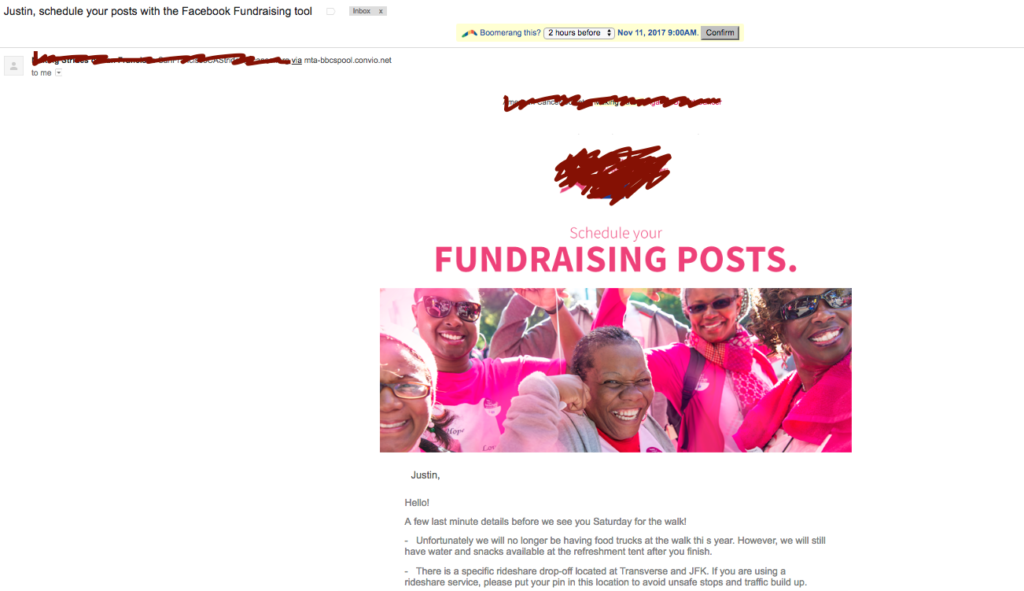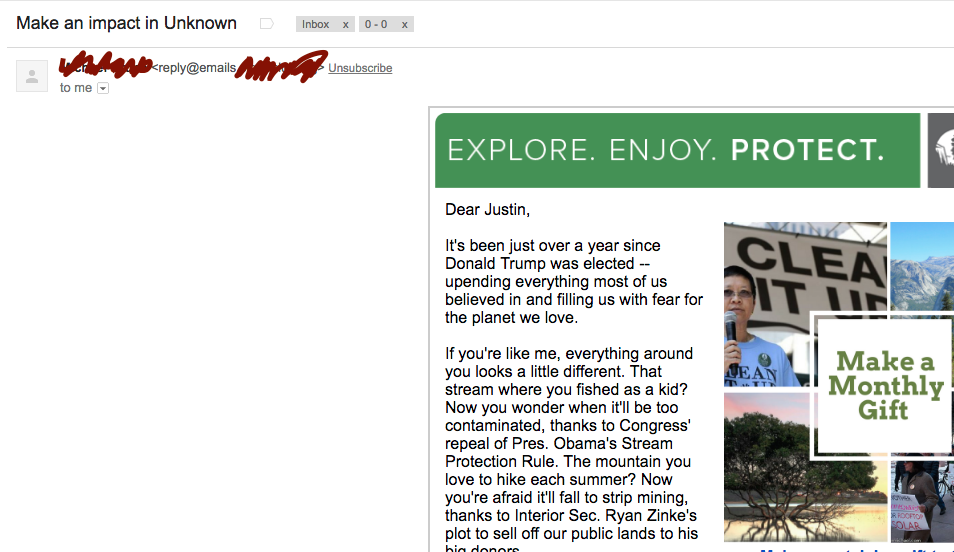As we continue towards Giving Tuesday and year-end email communication, now is the time to review your email sending practices and quality of data.
Below are three items to be on the lookout for with examples of organizations who have made mistakes (in just the last few weeks).
Check your copied template
Often, the fastest and easiest way to send emails in your organization’s template is to copy a prior message and plug your new content into it. The challenge with doing this is if you miss any aspect of it, you’ll disrupt the flow of the message.
I recently participated in a breast cancer walk. A final logistics email was sent 48 hours before the event. It contained important information about where to park, the schedule for the walk, and what the route was. Unfortunately, it was sent with the subject line, “Justin, schedule your posts with the Facebook Fundraising tool.” The top of the fold image was associated with fundraising posts, and there were errors in how it addressed the recipient.
While all of the critical content was in the email, the open rates will be significantly smaller. If you were attending an event would you be more likely to open an email that read “Justin, schedule your posts with the Facebook Fundraising tool” or “Important logistics information for Saturday’s event”?

Check your salutation
Email content that addresses someone with their name leads to higher open rates and action rates. The challenge is that you need name information to be correct. First name is a field that most organizations have accurate records of, however, some nonprofits pull contact info from a variety of sources.
We recently worked on a project in which only 90% of a nonprofit’s first name information was accurate. The remaining 10% was wrong because the organization previously operated an online community in which some individuals listed their username as the first name. Additionally, they held family-related events in which multiple family members would be registered with one email address.
When we reviewed email content that had first name included, there was an increase in opt-outs. This data is understandable – if you address a note to someone incorrectly, you would expect that they might value your communication less. We recommend you check the accuracy of your first names. If you have some records that are missing first name created a second email address that doesn’t include a salutation. I received emails from an organization that does not have my first name listed and I roll my eyes every time I read “Dear ,”

Check your segmented subject lines
A great way to increase open and action rates are to customize content in the subject line. This segmented content can be related to the person name, geographic information, or their interest in your organization. However, if you get this wrong, it reflects poorly on you.
This week I received an email from an organization with the subject line, “Make an impact in Unknown.” I suspect that the “Unknown” was related to where I live or environmental topic that I was passionate about it. In these situations, there is almost always an unknown or general group. These are individuals who you cannot segment to a specific group. These individuals need a specific subject line that captures the broader group they are part of.
If you’re segmenting email subject lines, test them all. The extra time it takes willhelp reduce confusion, annoyance, and increased opt-out rates on emails.

Justin (he, him) is a Principal and Co-Founder of Social Change Consulting. He has over fifteen years of nonprofit experience, with expertise in online fundraising, digital communications, and data management. Justin helps organizations connect their communication strategy to their income development needs. When he’s not on the clock, Justin is exploring Berlin, running, listening to too many podcasts, and drinking too much coffee.
